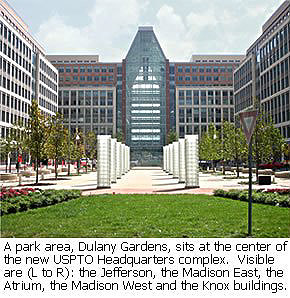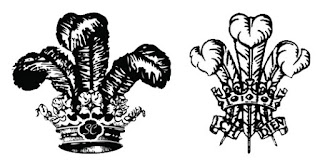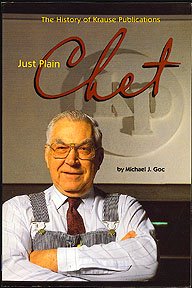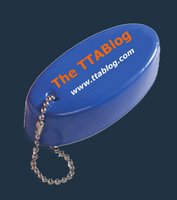TTAB Posts June 2019 Hearing Schedule
The Trademark Trial and Appeal Board (TTAB) has scheduled nine (9) oral hearings for the month of June 2019. The hearings will be held in the East Wing of the Madison Building, in Alexandria, Virginia. Briefs and other papers for these cases may be found at TTABVUE via the links provided.

June 4, 2019 - 1 PM: In re Christine Schiefer, Serial No. 87737157 [Refusal to register the mark shown immediately below, for "On-line retail store featuring apparel, glassware, stoneware and accessory items for the consumption of alcoholic beverages," on the ground that applicant's specimens of use fail to show the applied-for mark used as a service mark for the recited services].
June 4, 2019 - 2 PM: In re The Artsmiths, LLC, Serial No. 87151770 [Refusal to register the mark shown immediately below on the ground that it fails to function as a service mark for "Retail store services featuring handmade artisan products in the nature of original artwork in a wide variety of mediums; online retail store services featuring handmade artisan products in the nature of artwork in a wide variety of mediums"].
June 5, 2019 - 11 AM: Abercrombie & Fitch Trading Co. v. Isabella Elisabeth Shnittger, Opposition No. 91218738 [Opposition to registration of the mark shown below left, for "Caps; Hats; Hooded sweatshirts; Jackets; Long-sleeved shirts; Socks; Sweatshirts; T-shirts; Underwear," on the grounds of likely confusion with and likely dilution of the two registered marks shown below right, for various clothing items].
June 5, 2019 - 1 PM: In re Telecom (China) Ltd., Serial No. 87440925 [Section 2(d) refusal of the mark DIRTY LAUNDRY for "Hooded sweatshirts; Jackets; Jeans; Pants; Shirts; Shorts; T-shirts," in view of the identical mark registered for "footwear" and for "luggage" by two different owners].
June 12, 2019 - 1 PM: In re Lisa Brewer Buffaloe, Serial No. 87880862 [Refusal to register the mark JOHN 15:11 PUBLICATIONS on the grounds that the mark fails to function as a trademark for, and is deceptively misdescriptive of, "Downloadable e-books, audio books, multimedia files, and electronic publications in the field of literary works featuring inspirational and religious fiction and non-fiction, all of the foregoing not featuring the bible verse John 15:11" and "Printed books in the field of literary works featuring inspirational and religious fiction and non-fiction, all of the foregoing not featuring the bible verse John 15:11"].
June 13, 2019 - 11 AM: In re Recreational Equipment, Inc., Serial No. 87186780 [Section 2(e)(1) mere descriptiveness refusal of CO-OP for "Bicycles, bicycle seats, bicycle wheels, bicycle tires, bicycle handlebars, bicycle forks, bicycle handle bar stems"].
June 13, 2019 - 2 PM: Samsung Electronics Co., Ltd. v. P.C. Richard & Son Long Island Corp., Opposition No. 91222405 [Section 2(d) opposition to registration of SAMSUNG WIZ for "Smartphones; Tablet computer" in view of the registered marks THE WIZ and NOBODY BEATS THE WIZ for retail services for, inter alia, computers and electronics and electronic accessories and appliances, computer hardware and audio and visual equipment].
June 25, 2019 - 1 PM: Canal Holdings LLC v. Canal Capital Inc., Cancellation No. 92062198 [Petition for cancellation of a registration for the mark CANAL CAPITAL for financial and business advisory services, on the ground of likelihood of confusion with the registered mark CANAL HOLDINGS for investment services].
June 27, 2019 - 1 PM: International Dairy Foods Association v. Interprofession du Gruyère, and Syndicat Interprofessionnel du Gruyère, Opposition No. 91232427 [Opposition to registration of the certification mark GRUYERE for "cheese" that originates in the Gruyère region of Switzerland and France, on the grounds that applicant has not controlled the use of the term "gruyere" and further that the term is generic for a style of cheese].
Read comments and post your comment here.
TTABlog note: Any predictions? See any WYHA?s?
Text Copyright John L. Welch 2019.







































